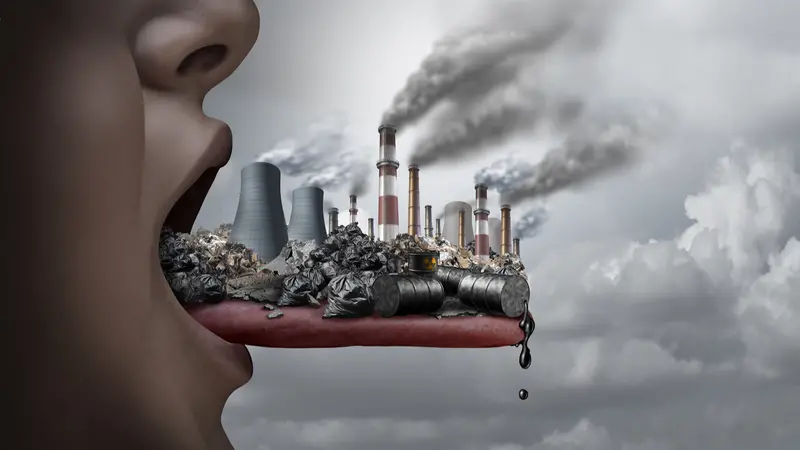

Planet and People Connection

Planet and People Connection
Understanding Toxins in Our Environment
We are a product of our how our genes express themselves based on diet, lifestyle choices, and our environment—past and present. Our health is dependent upon our body’s ability to adapt and respond to our diet, lifestyle choices, and environmental exposures. To make the best choices about where and how we live, work, and play to optimize our health and well-being, it is important to consider our exposures to toxins in our soil, water, air, food, and the other products we consume, use, and interact with at home and work.
Environmental toxins can take many forms, both natural and manmade. Not surprisingly, the amount of manmade toxins is overwhelming.
The United States Environmental Protection Agency’s (EPA) Chemical Substances Control Inventory lists more than 86,000 chemicals considered to be toxic. Only pesticides (e.g.. glyphosate) are manufactured and spread in the environment specifically to be toxic, with a tiny fraction of broadcast/sprayed chemicals reaching their targets. In addition, there are many other potentially harmful chemicals—including additives, cosmetics, drugs, pesticides, and tobacco—that are regulated by other agencies.
Not only is the list of toxic chemicals long, but the quantities produced are enormous—many in the millions and billions of pounds annually—and they are distributed widely throughout the United States. With such a large volume of chemicals in the environment, it is easy to see why toxin exposure is so prevalent.
But what are all of these chemicals doing to human health?
The table below, while not a comprehensive summary, illustrates the multiplicity and complexity of relationships between chemical exposures and health.
|
Toxin Category |
Where They Are Found |
Potential Health Outcomes |
|
Naturally occurring substances |
Mold; allergens from animals, plants, and foods |
Inflammatory conditions |
|
Reduced immunity |
||
|
Variety of sensitivities and allergic symptoms |
||
|
Persistent organic pollutants (diverse group of chemicals defined by their longevity in the environment and the body) |
Herbicides, flame retardants, stain repellents, anti-wrinkle and non-stick material, and organochlorine chemicals such as DDT |
Accumulation in body fat |
|
Cancers |
||
|
Endocrine disruption |
||
|
Metabolic syndrome, diabetes, obesity |
||
|
Pesticides (e.g., insecticides, herbicides, fungicides) |
Agriculture, household use (e.g., gardens), food, water |
Developmental, endocrine, immunological, neurological, reproductive, respiratory disorders, and cancers |
|
Polymers |
Plastics |
Endocrine disruption |
|
Cancers |
||
|
Toxic elements, otherwise known as heavy metals (e.g., arsenic, cadmium, lead, mercury) |
Water, food, dust, fish, dental amalgams, consumer products, old pesticides |
Cancers |
|
Endocrine disruption (from lead) |
||
|
Organ damage (e.g., brain, kidney, liver, and bone) |
||
|
Neurological dysfunction |
||
|
Immune system impairment (from mercury) |
||
|
Volatile organic compounds |
Formaldehyde, benzene, fragrances, gasoline, solvents |
Neurological effects |
|
Cancers |
||
|
Variety of sensitivities and allergic symptoms |
As the environmental toxin problem grows, the need to address this issue in the choices we make individually and as a society expands proportionately. The exposure to environmental toxins also may be the underlying cause of many chronic diseases. Persistent unresolved health issues may be a reason to seek the help of a practitioner trained to identify and eliminate toxins that have accumulated in your body (see Environmental Medicine and Detoxification).
REFERENCES
American Academy of Environmental Medicine. (n.d.). What is environmental medicine? https://www.aaemonline.org/
Sears, M. and Genuis, S. (2012, January 19). Environmental determinants of chronic disease and medical approaches: Recognition, avoidance, supportive therapy, and detoxification. Journal of Environmental and Public Health. https://www.ncbi.nlm.nih.gov/pmc/articles/PMC3270432/
United States Environmental Protection Agency. (n.d.). About the TSCA chemical substance inventory. https://www.epa.gov/tsca-inventory/about-tsca-chemical-substance-inventory


 By
By







